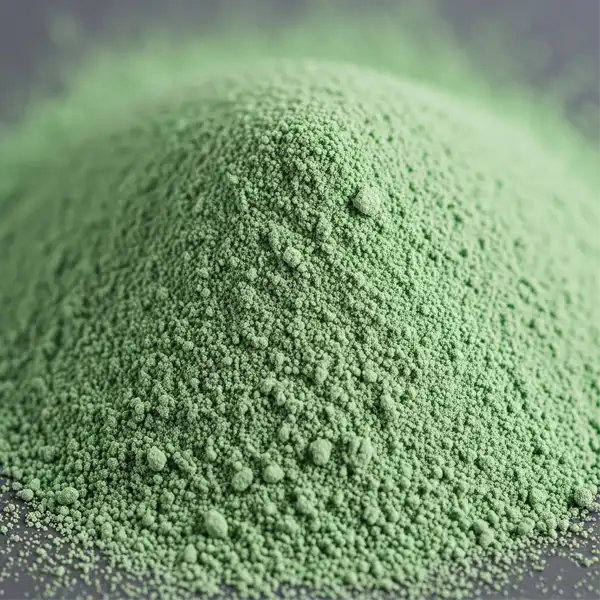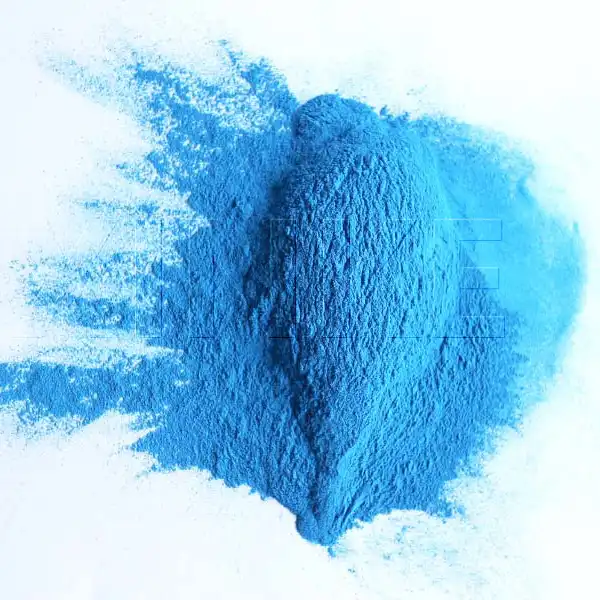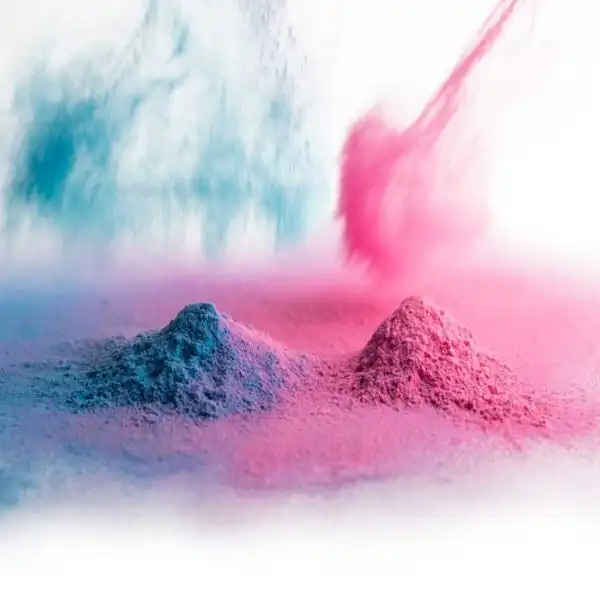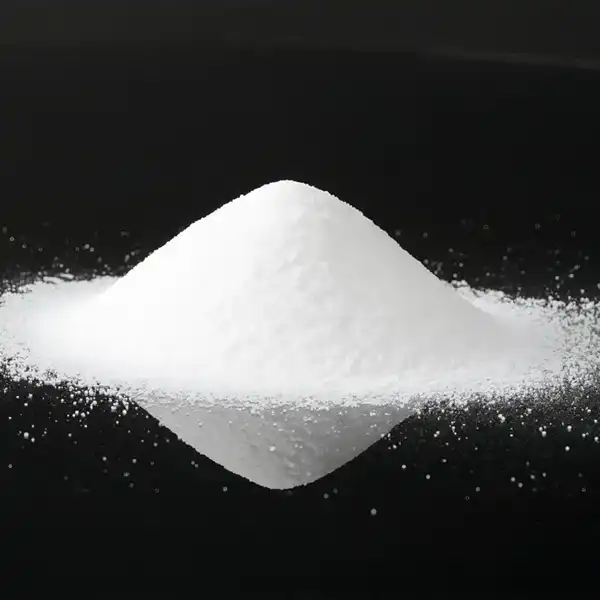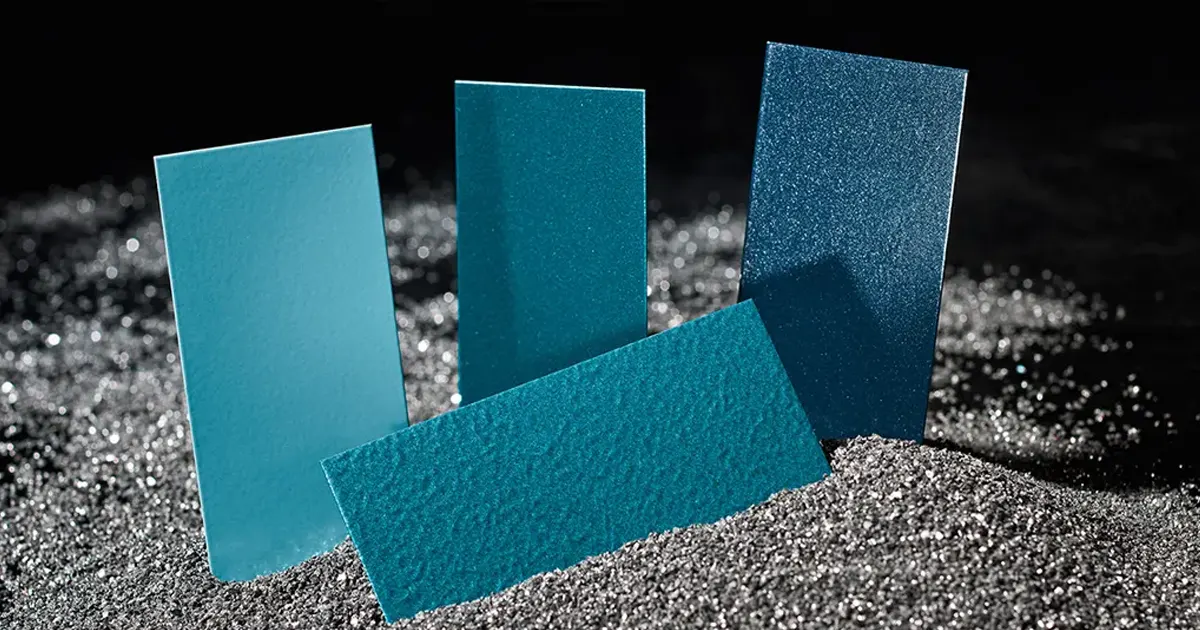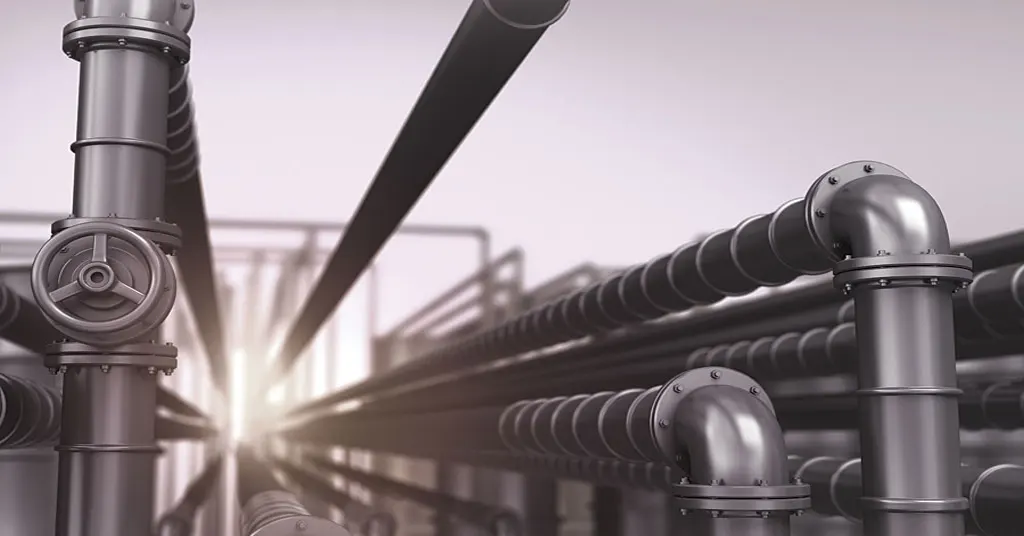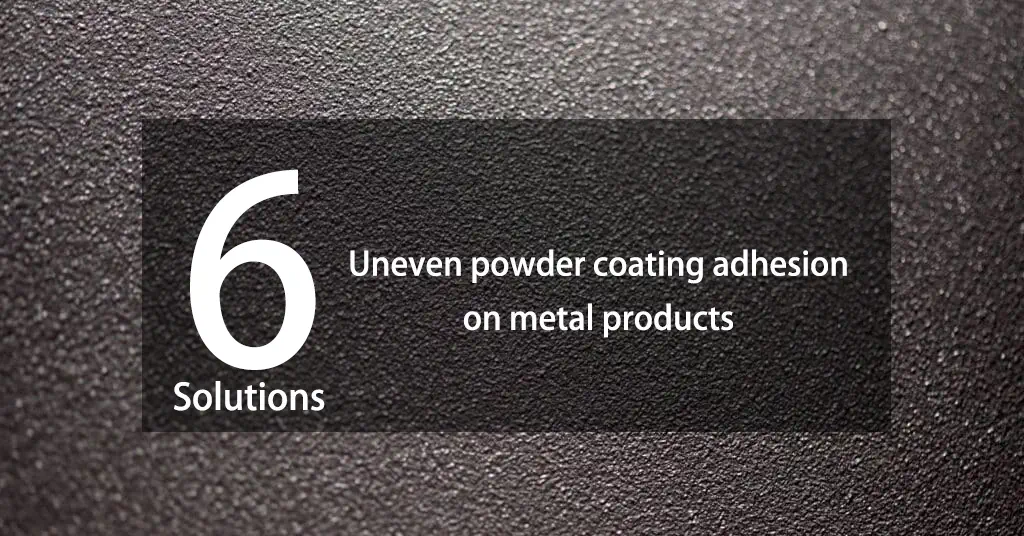How to boost powder coating corrosion resistance for coastal appliances?
Coastal areas expose appliances to aggressive elements like salt-laden air and moisture, accelerating corrosion. Without proper protection, metal surfaces on appliances such as air conditioners, refrigerators, and washing machines can degrade, leading to costly repairs and diminished brand reputation. Our advanced powder coating solutions are specifically designed to combat these challenges, offering superior corrosion resistance for coastal appliances while meeting stringent environmental regulations like RoHS and REACH.
Key Challenges in Coastal Environments
- Salt Spray: Airborne salt accelerates rust formation, compromising appliance longevity.
- High Humidity: Constant moisture promotes corrosion, especially in areas with compromised coatings.
- UV Exposure: Prolonged sunlight degrades coatings, diminishing both aesthetic appeal and protective performance.
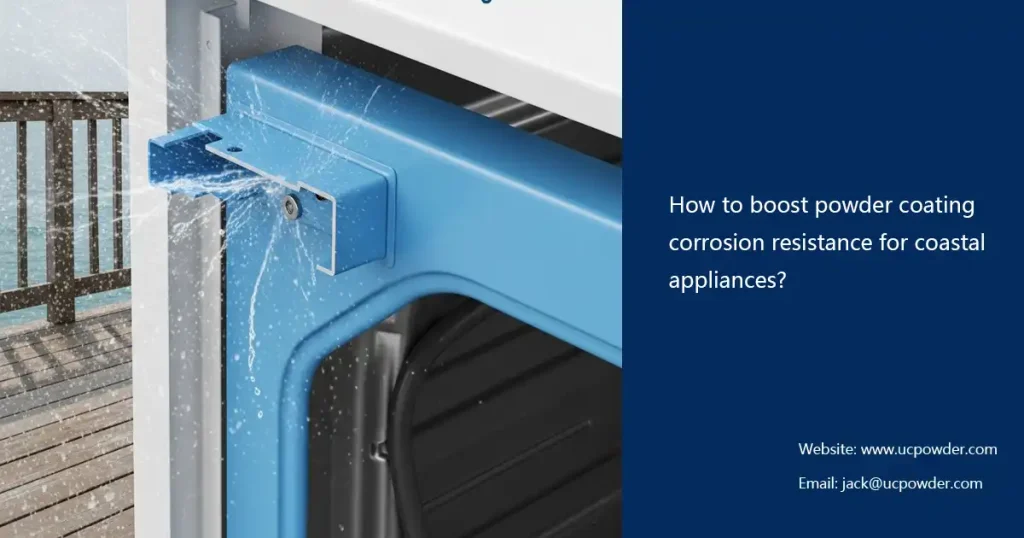
Proven Strategies to Enhance Powder Coating Corrosion Resistance
1. Optimize Surface Preparation for Maximum Adhesion
Proper surface preparation is the cornerstone of durable powder coating corrosion resistance. A clean, well-prepared substrate ensures strong coating adhesion, significantly reducing the risk of corrosion under the coating.
- Multi-Stage Cleaning and Degreasing: Begin by thoroughly removing oils, dust, and any residues from the workpiece surface. This typically involves alkaline cleaning (e.g., using an industrial cleaner with a pH of 10-12, at 60-70°C, for 5-10 minutes of immersion) followed by multiple fresh water rinses. Ensure the surface is residue-free, which can be verified by a water break-free test (water should spread evenly without beading or breaking).
- Chemical Conversion Coating Treatment:
- Zinc Phosphating: For steel substrates, we recommend medium or low-temperature zinc phosphate treatment. Process parameters typically include a phosphate solution concentration of 2-4%, a temperature range of 35-55°C, and a treatment time of 5-15 minutes. The phosphate coating weight should be controlled between 1.5-4.0 g/m² to form a dense and uniform amorphous or microcrystalline zinc phosphate layer, providing an excellent corrosion-resistant base and strong adhesion.
- Nano-Ceramic Pretreatment: As an eco-friendly alternative to chromate and traditional phosphate treatments, nano-ceramic pretreatments form a thin, dense, nanoscale conversion layer on both aluminum and steel surfaces. We recommend using zirconium- or titanium-based nano-ceramic solutions at room temperature to 40°C for 1-3 minutes. This technology significantly improves coating adhesion and corrosion protection while being more environmentally sound.
- Precise Drying: After surface treatment, workpieces must be thoroughly dried to prevent defects during the coating process. We recommend using a hot air circulating oven with temperatures controlled between 120-150°C for 10-20 minutes to ensure all moisture is completely evaporated.
These techniques dramatically improve coating adhesion, enabling appliances to pass rigorous salt spray tests (e.g., ASTM B117) with over 1000 hours of corrosion-free performance.
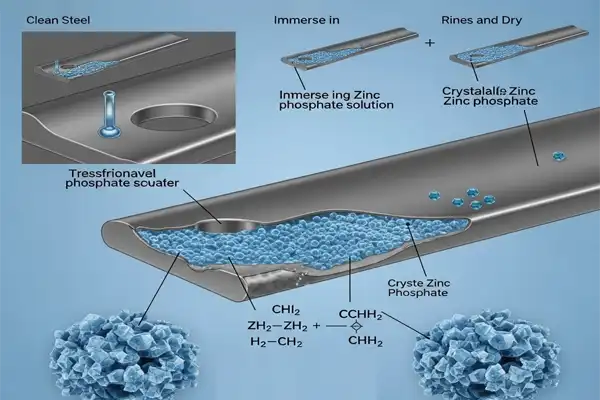
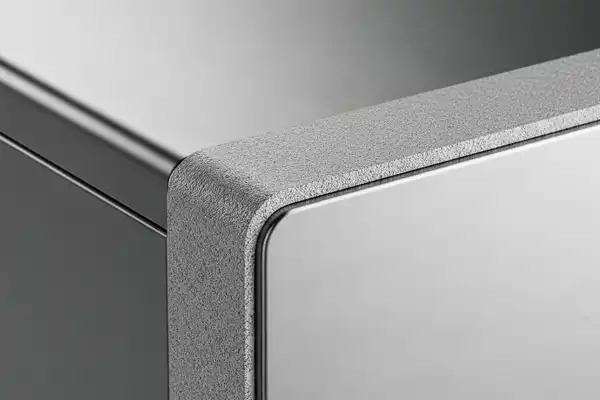
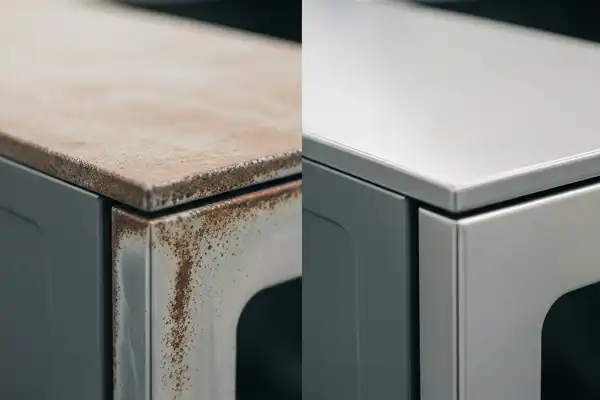
2. Select High-Performance Powder Coating Formulations
Choosing the correct powder coating formulation is vital for the long-term durability of coastal appliances. We offer specialized formulations tailored for coastal environments, highlighting their key performance metrics:
- Epoxy-Polyester Hybrids (Indoor Applications): Recommended for indoor appliances, these provide excellent chemical and corrosion resistance. While offering good flow and aesthetic appeal, their UV resistance is limited, making them unsuitable for prolonged outdoor exposure. They typically meet 500-1000 hours in ASTM B117 salt spray tests.
- Super-Durable Polyester Coatings (Outdoor Applications): Designed for outdoor appliances, these coatings utilize high-performance weather-resistant polyester resins and melamine curing agents. They offer superior UV resistance and color retention, capable of withstanding harsh coastal conditions (e.g., ISO 12944 C4/C5-M environments). Their gloss retention typically exceeds 80% after 5 years of outdoor exposure, and they can achieve 1000-1500 hours of salt spray resistance.
- Fluoropolymer-Based Coatings (Extreme Coastal Exposure): For extreme coastal environments, our PVDF (polyvinylidene fluoride) or FEVE (fluoroethylene vinyl ether) based powder coatings deliver unparalleled weatherability, corrosion protection, chemical resistance, and self-cleaning properties. These coatings maintain excellent gloss and color stability for over 20 years of outdoor exposure and readily pass over 2000 hours in salt spray tests.
- Integration of Anti-Corrosion Additives: Specific additives can be incorporated into the above coating formulations based on project needs. For instance, nanoscale titanium dioxide (TiO2) or zinc oxide (ZnO) can enhance the coating’s shielding effect against UV radiation, improving UV resistance. Specific corrosion inhibitors or flake pigments (e.g., micaceous iron oxide) can create a more tortuous path for corrosive agents, significantly boosting corrosion resistance in salt spray and humid environments.
Our coatings are rigorously tested to ensure corrosion resistance for coastal appliances, delivering up to 1500 hours of salt spray resistance.
3. Implement Advanced Coating Application Techniques
The application process significantly impacts the final performance of powder coatings for coastal appliances. Our recommended techniques ensure uniform, defect-free coatings:
- Dual-Layer or Multi-Layer Coating Systems: For maximum protection, a dual-layer coating system is highly recommended.
- First Layer (Primer): Apply a layer of epoxy zinc-rich primer or a standard epoxy primer with a thickness of approximately 30-50 microns. Zinc-rich primers offer excellent electrochemical corrosion protection through sacrificial anode action.
- Second Layer (Topcoat): After the primer cures, apply a topcoat of super-durable polyester or fluorocarbon with a thickness of approximately 50-70 microns. The topcoat primarily provides aesthetic appeal, UV protection, and an additional physical barrier.
- This layered structure significantly extends overall corrosion protection compared to a single-layer coating.
- Precise Film Thickness Control: The final dry film thickness (DFT) is critical for the coating’s protective performance. For coastal applications, the recommended total DFT ranges from 80-120 microns. This can be achieved through real-time monitoring using non-contact film thickness gauges (e.g., eddy current or magnetic induction types), ensuring uniformity and preventing thin spots.
- Optimized Curing Process: Curing parameters (temperature and time) must be strictly controlled to ensure the powder coating fully cross-links and achieves optimal physical and chemical properties. Typically, polyester coatings recommend curing at 180-200°C for 10-20 minutes (depending on the specific formulation and oven type). Under-curing leads to diminished coating performance, while over-curing can cause brittleness or color changes. MEK rub tests or DSC (Differential Scanning Calorimetry) should be used periodically to verify cure completion.
- Advanced Electrostatic Spray Equipment and Process: Utilize high-voltage electrostatic spray guns and automatic reciprocators/robots for application to ensure uniform coating thickness, no runs, and no pinholes. Regularly check the spray gun’s voltage (e.g., 60-90kV), air pressure, and powder flow rate for optimal atomization and transfer efficiency. For complex geometries, consider employing Faraday cage effect suppression techniques or low-pressure spraying to ensure adequate coating in recessed areas.
These techniques work synergistically to significantly enhance the coating’s ability to withstand coastal challenges, ensuring long-lasting appliance performance.
4. Validate Performance with Rigorous Testing
To guarantee powder coating corrosion resistance, we conduct comprehensive testing strictly in accordance with relevant international standards, simulating the harshest coastal environments:
- Salt Spray Testing (ASTM B117 / ISO 9227): This is a foundational test for evaluating corrosion resistance. Our coatings aim to achieve 1000-1500 hours of resistance without red rust and with corrosion creep from a scribe not exceeding 2mm. The test is conducted at 35°C with continuous spraying of a 5% sodium chloride solution.
- Humidity Testing (ASTM D2247 / ISO 6270-2): Simulates the effect of high humidity on the coating. Tests are typically performed at 40-50°C and 95-100% relative humidity for durations up to 1000 hours. The coating is evaluated for blistering, loss of gloss, or adhesion degradation.
- Accelerated Weathering/UV Testing (ASTM G154 / ISO 16474-3): Simulates sunlight exposure damage. UVB-313 or UVA-340 lamps are used in cyclic exposure (e.g., 8 hours UV exposure, 4 hours condensation) for total cycles ranging from 1000-3000 hours. The coating is evaluated for gloss retention, color change (ΔE), and chalking.
- Cyclic Corrosion Testing (GMW14872 / SAE J2334): This is a more realistic accelerated corrosion test that simulates the alternating dry, wet, and salt spray conditions found in coastal environments. The test typically includes cycles of salt spray, high humidity, and dry periods, providing a more accurate reflection of the coating’s performance in complex conditions.
- Adhesion Testing (ASTM D3359 / ISO 2409): Performed before and after salt spray, humidity, or UV testing using a cross-cut method to evaluate the coating’s adhesion to the substrate. Ratings should achieve 4B or 5B (less than 5% peeling area after scribing).
These comprehensive tests ensure your appliances meet and exceed industry standards and customer expectations in coastal environments.
Benefits of Choosing Our Powder Coating Solutions
Partnering with us, a trusted powder coating manufacturer, offers unparalleled benefits for appliance manufacturers targeting coastal markets:
- Extended Appliance Lifespan: Our coatings effectively protect against corrosion, significantly reducing maintenance and warranty costs.
- Cost-Effective Solutions: Our optimized formulations and processes balance high performance with affordability.
- Eco-Friendly Compliance: Our coatings meet stringent international environmental standards (e.g., RoHS, REACH), ensuring sustainability and safety.
- Customizable Options: We can tailor coating solutions to your specific appliance types, aesthetic preferences, and performance requirements.
Contact Us for Tailored Powder Coating Solutions
Ready to enhance your appliances’ corrosion resistance for coastal environments? As a leading powder coating manufacturer, we offer customized solutions to meet your unique needs. Contact us today to discuss your requirements and explore our high-performance powder coatings for coastal appliances.
FAQs
Even with proper construction, premature failure of powder coatings in coastal environments is often due to corrosion under the coating caused by continuous salt spray and moisture infiltration, coupled with UV degradation leading to coating embrittlement and microcracks. Once the integrity of the coating is compromised, corrosion will rapidly spread.
Metal substrates can significantly affect the selection of coatings and pretreatment. Steel usually requires stronger pre-treatment (such as phosphating) and epoxy zinc rich primer to prevent rust; Aluminum materials are more commonly treated with nano ceramics to enhance adhesion, and high-performance polyester or fluorocarbon topcoats are directly selected to cope with ultraviolet radiation and maintain appearance.
In addition to initial coating, ongoing considerations for maintaining the performance of coastal electrical powder coatings include regular cleaning to remove salt, as well as focusing on innovations such as self-healing coatings or embedded corrosion inhibitor coatings. These are designed to extend the lifespan of coatings and provide continuous protection in the event of minor damage.

Erik
Doctor of Chemical Engineering, expert in the field of powder coatings, with over 20 years of professional experience in the research and application of powder coatings
Have Anything To Ask Us?
